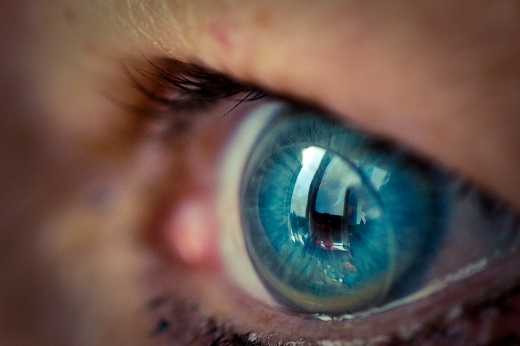Contact Lenses: Care And benefits
Comfortable and aesthetic. These are two of the benefits of contact lenses, which logically require a series of specific care.
The lenses, transparent and graduated for each case, are placed on the cornea, in the anterior part of the eye, to correct vision defects in cases such as hypermetropia, myopia and astigmatism.
What types of lenses are there? At what age can they be used? What care do they require? Can children use contact lenses? These are some of the questions we are going to try to answer.
The contact lenses for convenience or aesthetic have become an increasingly used alternative to glasses. The lenses help to correct refractive defects of the eye, especially myopia and farsightedness and, to a lesser extent, astigmatism. The lenses not only exert a protective function of the eye, also corrective.
There are two types of lenses, hard and soft. The first are rigid, small and help to correct myopia, hyperopia and astigmatism (up to three diopter). They are placed and removed easily, although their adaptation is longer and their tolerance is lower.
For its part, soft contact lenses with hydrophilic, larger than the hard and better tolerated. They correct myopia, farsightedness and mild astigmatism. Because of its comfort and few complications, soft contact lenses are the most used today. The contact lenses are graded and are placed in front of the cornea (located in the front of the eye, protected by the eyelids and tears).
Table of Contents
How To Take Care of Contacts Lenses?
Depending on the type, the contact lenses require a series of specific care. Thus, the hard ones have to be cleaned daily and disinfected periodically. The soft ones, on the other hand, must always be kept moist to avoid the accumulation of organic residues and microorganisms.
Among the tips to follow:
- Always wash hands before handling.
- Use recommended fluids to clean the lenses and renew them when advised by the ophthalmologist.
- Daily use lenses should be removed from the eye at bedtime or sleep.
- Never leave the lenses to dry and store them in the correct solution.
When traveling, maintain your lens hygiene routine:
- Carry a travel-size lens solution bottle that complies with airline regulations.
- Pack extra lenses and a backup pair of glasses in case of emergencies.
- Avoid transferring solution into smaller containers as this can compromise its sterility.
Both in the period of adaptation and in the daily use of the contact lenses there can appear some problems or contraindications, such as infections or corneal inflammations, dry eye, hypersensitivity intolerance or conjunctivitis, among others.
Certain habits can compromise lens hygiene and eye safety. Here’s what to avoid:
- Do Not Sleep in Your Lenses: Unless specifically approved by your doctor, sleeping in contact lenses can increase the risk of corneal infections.
- Avoid Wearing Lenses in Water: Do not wear your lenses while swimming, showering, or in hot tubs, as water can harbor bacteria.
- Skip Makeup Before Lenses: Always insert your lenses before applying makeup to prevent residue from sticking to them.
In some cases, tearing, hypersensitivity to light or physical discomfort may make it difficult to use lenses. It is important to go to the ophthalmologist’s office periodically, to check the condition of the cornea and the lenses, avoiding possible risks.
At What Age May One Use Contact Lenses?
Nowadays, thanks to the new designs and advances in contact lenses, it can be used since infancy, especially for the treatment of myopia and hyperopia that appear at school age.
In both cases, in addition, the use of corrective glasses may be more uncomfortable for the child, while at the same time remaining peripheral vision.
How Do You Maintain Your Eyes After Wearing Contact Lenses?
Caring for your eyes after removing contact lenses is essential to maintain their health and comfort. Here are key steps to follow:
- Rest Your Eyes: Allow your eyes to breathe and recover from the contact lens wear. Avoid wearing glasses or other corrective lenses immediately after removing your contacts if possible.
- Hydrate Your Eyes: Use preservative-free artificial tears to moisturize your eyes and alleviate dryness or irritation caused by lens wear.
- Clean Your Lids and Lashes: Gently clean your eyelids with a warm, damp cloth or a recommended eyelid cleanser to remove any residue.
- Avoid Rubbing Your Eyes: Rubbing can irritate the cornea, especially if your eyes feel dry or tired.
- Monitor for Irritation: Pay attention to signs of redness, discomfort, or blurry vision. If these persist, consult your eye doctor promptly.
- Take Breaks from Contact Lenses: Take regular breaks from wearing contact lenses to reduce eye strain and improve overall eye health.

